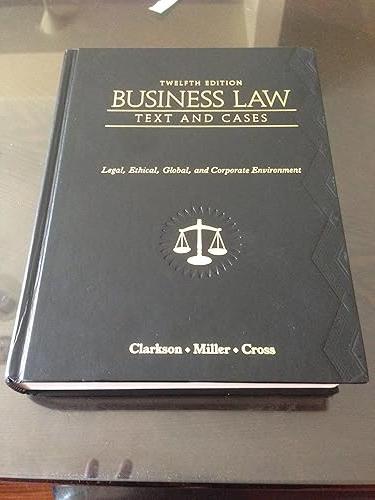The plaintiff built a country residence for the defendant at a cost of upwards of $77,000, and
Question:
The plaintiff built a country residence for the defendant at a cost of upwards of $77,000, and now sues to recover a balance of
$3,483.46, remaining unpaid. The work of construction ceased in June, 1914, and the defendant then began to occupy the dwelling. There was no complaint of defective performance until March, 1915. One of the specifications for the plumbing work provides that—
All wrought-iron pipe must be well galvanized, lap welded pipe of the grade known as “standard pipe” of Reading manufacture.
The defendant learned in March, 1915, that some of the pipe, instead of being made in Reading, was the product of other factories. The plaintiff was accordingly directed by the architect to do the work anew.
The plumbing was then encased within the walls except in a few places where it had to be exposed.
Obedience to the order meant more than the substitution of other pipe.
It meant the demolition at great expense of substantial parts of the completed structure. The plaintiff left the work untouched, and asked for a certificate that the final payment was due. Refusal of the certificate was followed by this suit
[in a New York state court].The evidence sustains a finding that the omission of the prescribed brand of pipe was neither fraudulent nor willful. It was the result of the oversight and inattention of the plaintiff’s subcontractor. Reading pipe is distinguished from Cohoes pipe and other brands only by the name of the manufacturer stamped upon it at intervals of between six and seven feet. Even the defendant’s architect, though he inspected the pipe upon arrival, failed to notice the discrepancy. The plaintiff tried to show that the brands installed, though made by other manufacturers, were the same in quality, in appearance, in market value, and in cost as the brand stated in the contract—that they were, indeed, the same thing, though manufactured in another place. The evidence was excluded, and a verdict directed for the defendant. The [state intermediate appellate court] reversed, and granted a new trial.
We think the evidence, if admitted, would have supplied some basis for the inference that the defect was insignificant in its relation to the project. The courts never say that one who makes a contract fills the measure of his duty by less than full performance. They do say, however, that an omission, both trivial and innocent, will sometimes be atoned for by allowance of the resulting damage, and will not always be the breach of a condition * * * . [Emphasis added.]
* * * Where the line is to be drawn between the important and the trivial cannot be settled by a formula. In the nature of the case precise boundaries are impossible.
The same omission may take on one aspect or another according to its setting. Substitution of equivalents may not have the same significance in fields of art on the one side and in those of mere utility on the other.
Nowhere will change be tolerated, however, if it is so dominant or pervasive as in any real or substantial measure to frustrate the purpose of the contract. There is no general license to install whatever, in the builder’s judgment, may be regarded as “just as good.” The question is one of degree, to be answered, if there is doubt, by the triers of the facts, and, if the inferences are certain, by the judges of the law. We must weigh the purpose to be served, the desire to be gratified, the excuse for deviation from the letter, the cruelty of enforced adherence. Then only can we tell whether literal fulfillment is to be implied by law as a condition.
[Emphasis added.]
Questions:-
1. The New York Court of Appeals found that Jacob & Youngs had substantially performed the contract. To what, if any, remedy was Kent entitled?
2. A requirement of substantial performance is good faith. Did Jacob & Youngs substantially perform all of the terms of the contract in good faith? Why or why not?
Step by Step Answer:

Business Law Text And Cases Legal Ethical Global And Corporate Environment
ISBN: 9780538470827
12th Edition
Authors: Kenneth W. Clarkson, Roger LeRoy Miller, Frank B. Cross





